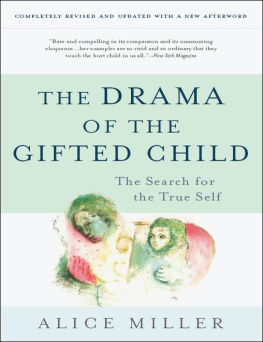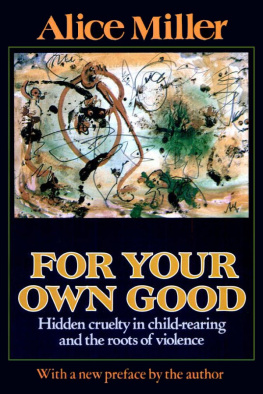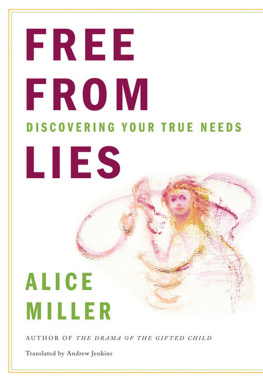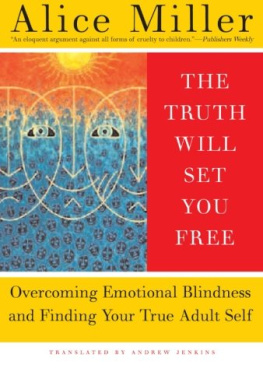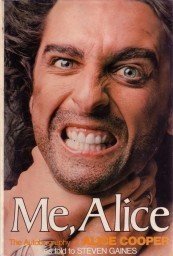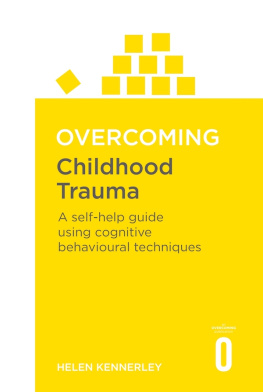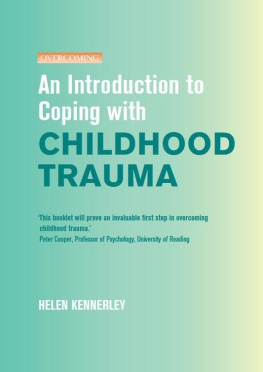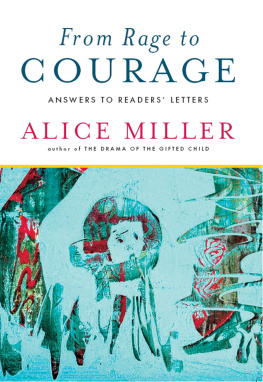Alice Miller - The untouched key : tracing childhood trauma in creativity and destructiveness
Here you can read online Alice Miller - The untouched key : tracing childhood trauma in creativity and destructiveness full text of the book (entire story) in english for free. Download pdf and epub, get meaning, cover and reviews about this ebook. year: 1991, publisher: Anchor Books, Doubleday, genre: Non-fiction. Description of the work, (preface) as well as reviews are available. Best literature library LitArk.com created for fans of good reading and offers a wide selection of genres:
Romance novel
Science fiction
Adventure
Detective
Science
History
Home and family
Prose
Art
Politics
Computer
Non-fiction
Religion
Business
Children
Humor
Choose a favorite category and find really read worthwhile books. Enjoy immersion in the world of imagination, feel the emotions of the characters or learn something new for yourself, make an fascinating discovery.

- Book:The untouched key : tracing childhood trauma in creativity and destructiveness
- Author:
- Publisher:Anchor Books, Doubleday
- Genre:
- Year:1991
- Rating:3 / 5
- Favourites:Add to favourites
- Your mark:
- 60
- 1
- 2
- 3
- 4
- 5
The untouched key : tracing childhood trauma in creativity and destructiveness: summary, description and annotation
We offer to read an annotation, description, summary or preface (depends on what the author of the book "The untouched key : tracing childhood trauma in creativity and destructiveness" wrote himself). If you haven't found the necessary information about the book — write in the comments, we will try to find it.
The untouched key : tracing childhood trauma in creativity and destructiveness — read online for free the complete book (whole text) full work
Below is the text of the book, divided by pages. System saving the place of the last page read, allows you to conveniently read the book "The untouched key : tracing childhood trauma in creativity and destructiveness" online for free, without having to search again every time where you left off. Put a bookmark, and you can go to the page where you finished reading at any time.
Font size:
Interval:
Bookmark:
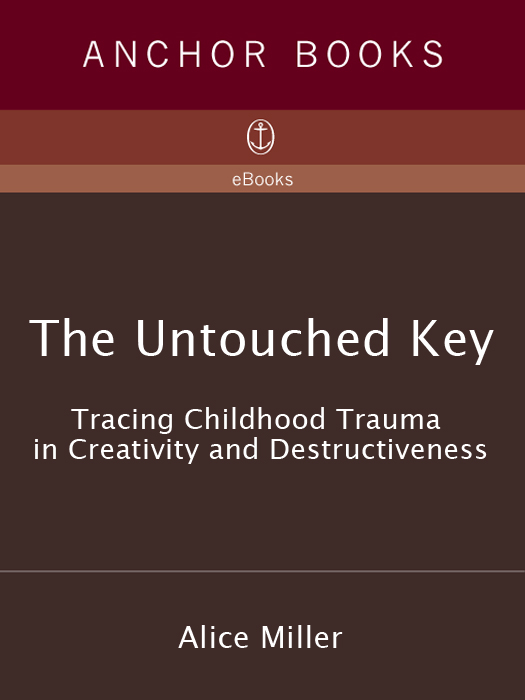
By Alice Miller
THE DRAMA OF THE GIFTED CHILD :
The Search for the True Self
(originally published as PRISONERS OF CHILDHOOD )
FOR YOUR OWN GOOD :
Hidden Cruelty in Child-rearing and the Roots of Violence
THOU SHALT NOT BE AWARE :
Societys Betrayal of the Child
PICTURES OF A CHILDHOOD :
Sixty-six Watercolors and an Essay
THE UNTOUCHED KEY :
Tracing Childhood Trauma in Creativity and Destructiveness
BANISHED KNOWLEDGE :
Facing Childhood Injuries

FIRST ANCHOR BOOKS EDITION, MARCH 1991
Copyright 1990 by Alice Miller
All rights reserved under International and Pan-American Copyright Conventions. Published in the United States by Anchor Books, a division of Random House, Inc., New York, and simultaneously in Canada by Random House of Canada Limited, Toronto. Originally published as Der gemiedene Schlssel by Suhrkamp Verlag am Main, copyright 1998. Any variations from the original German text are a result of the authors wishes. The Untouched Key was published in hardcover in the United States by Doubleday in 1990. The Anchor Books edition is published by arrangement with Doubleday, a division of Random House, Inc.
Anchor Books and colophon are registered trademarks of Random House, Inc.
FRONTISPIECE : Picasso, Guernica
1990 ARS. N.Y./SPADEM
Library of Congress Cataloging-in-Publication Data
Miller, Alice.
[Gemiedene Schlssel. English]
The untouched key: tracing childhood trauma in creativity and destructiveness / Alice Miller; translated from the German by Hildegarde and Hunter Hannum.
p. cm.
Translation of: Der gemiedene Schlssel.
Includes bibliographical references.
1. Child psychology. 2. Parent and child. 3. Psychic trauma in children. I. Title.
BF408.M4913 1990 89-25623
155.9dc20
eISBN: 978-0-307-81692-4
www.anchorbooks.com
v3.1
W henever I leaf through a biography of a creative person, I find information on the first pages of the book that is especially helpful in my work. The information has to do with one or more childhood events whose traces are always apparent in the persons creative work, usually running through it like a continuous thread. In spite of this, the individual childhood events usually are not given any prominence by the biographer. The facts surrounding them could be likened to a key ring we have found but have no use for. We dont know who the owner is, and we suspect the person has long since moved to another house and therefore will no longer have the slightest interest in the lost keys.
Is it permissible, then, for me to take these keys and try to match them to the doors of old houses to discover a life that has long been waiting to be recognized? It may be considered indiscreet to open the doors of someone elses house and rummage around in other peoples family histories. Since so many of us still have the tendency to idealize our parents, my undertaking may even be regarded as improper. And yet it is something that I think must be done, for the amazing knowledge that comes to light from behind those previously locked doors contributes substantially toward helping people rescue themselves from their dangerous sleep and all its grave consequences.
The Earthquake in Mlaga and the Painters Eye of a Child
T he throngs of people at the exhibit of Picassos late works in Basel make it difficult to get a good look at the pictures. Groups of students are being told by experts how they should interpret Picasso. They are trying hard to understand something they could learn about just as well at home from Picasso reproductionsfor example, his skill in composition. Many of them yawn, turn away from the pictures, look at their watches, and probably think of the cup of coffee that will come to their rescue. The expert who is instructing them doesnt give up; he tries the theory of color, explaining how the orange makes the blue stand out and how well Picasso knew which colors to use for a strong effect. This too seems to bore the students. They are making a visible effort to take in what their instructor is saying and to be sure not to forget it, but the Picasso who is being explained here is somehow dead, one artist among others who have great skill and a mastery of color and form.
Yet along with the many bored and yawning faces, I think I can detect some that are curious, fascinated, and disquieted. I myself feel something like gratitude for this great festival of color I am permitted to feast my eyes on and for Picassos courage, from which I take inspiration. This man, nearly ninety when he painted these pictures, disregarded all convention as well as his own technical ability and attained what he had wished for all his life: the spontaneity and freedom of a child, which his perfectionism robbed him of in childhood.
It may have been precisely this inspiring power of Picassos late works that helped me gradually forget the great crowds of bored people around me until finally I was fully able to enter inwardly on this adventure. I seemed to be sensing a mans last strenuous efforts to express the most hidden secrets of his life with every means at his disposal before its too late, before death takes the brush from his hand.
A great deal has been written about the sexual themes in Picassos work, and they have always been understood as a sign of his virility. The fact that he depicted male and female genital organs with increasing frequency as he grew older, even right up to his death, has been attributed to his declining libido and a longing for pleasures no longer attainable. But anyone who makes the effort to discover the emotional content of Picassos last pictures of nude men and women will probably sense a sorrow that is much deeper and whose roots reach back much further in Picassos life than can be explained by an aging mans regrets at his waning sexual vitality.
But what is the origin of his suffering? I asked myself as I walked through the exhibit, and at first I found no answer. I sensed his suffering not only in the themes but also in the force of the brush movements, in the vehement way he sometimes applied the color and conjured up new feelings that had to be given form. I had the impression that these paintings express a struggle between what Picasso must do and what he is able to do, between the necessity of making these strokes and no other, of using this color and no other, and a highly conscious, masterful eye that cannot unlearn the laws of color theory and composition even if it would like to. The force of necessity increases with such intensity in Picassos late works that his ability becomes secondary. Feeling is no longer given a shape, as it was in the painting Guernica; now it is lived and becomes pure expression. He no longer does drawings, he no longer counts on the viewers comprehension; there remains only his haste to produce the unsayable, to say it with colors. But what was the unsayable for Picasso?
I viewed the exhibit of his late works with this question in mind and found no answer. I leafed through an endless number of Picasso biographies, searching for traumatic experiences in his childhood. Since the efficiency of defense mechanisms decreases in old age, since repression works with less ingenuity, it was possible, I thought, that traces of childhood trauma not evident before might become visible in his late works. But at first such traces were undetectable; here was a child who was loved, who had a happy home life.
Font size:
Interval:
Bookmark:
Similar books «The untouched key : tracing childhood trauma in creativity and destructiveness»
Look at similar books to The untouched key : tracing childhood trauma in creativity and destructiveness. We have selected literature similar in name and meaning in the hope of providing readers with more options to find new, interesting, not yet read works.
Discussion, reviews of the book The untouched key : tracing childhood trauma in creativity and destructiveness and just readers' own opinions. Leave your comments, write what you think about the work, its meaning or the main characters. Specify what exactly you liked and what you didn't like, and why you think so.

